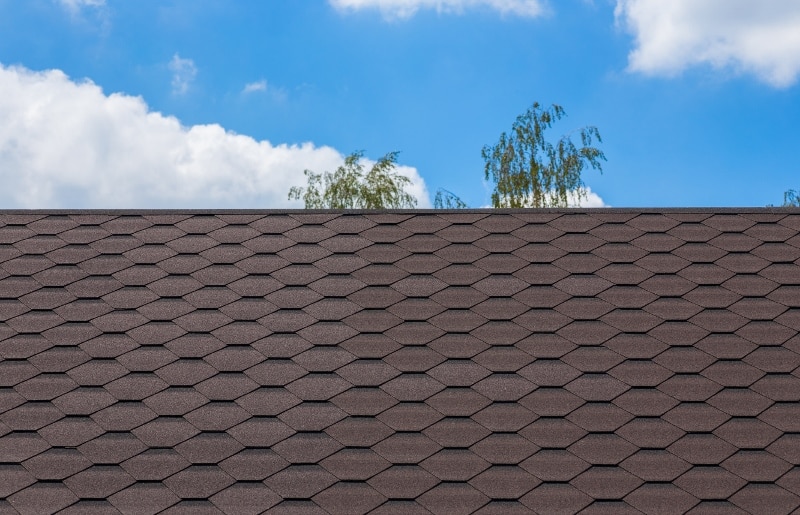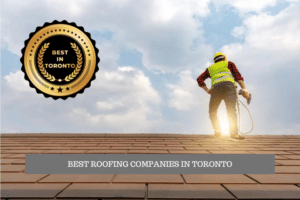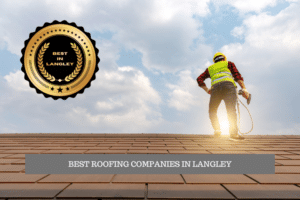Asphalt roofing is often thought of as the standard choice of materials, but have you ever thought of a rubber roof? Rubber roofing is one of the best options, especially when it comes time to replace your roof. It’s incredibly durable, eco-friendly, and has a long lifespan. Rubber is quickly becoming the new popular choice of roofing so, if you need a new roof, it is certainly worth it to consider.
This guide will breakdown the pros and cons of rubber roofing and, most importantly, its cost. But first, there are some factors to consider that will help with any decisions.
Table of Contents
ToggleSigns you need a new roof
When your current roof starts failing, don’t ignore the signs until it becomes even more severe. Investing in a new roof is a cost-effective choice, especially when considering the long-term benefits and value. With that in mind, keep an eye out for these signs that your roof needs replacing:
Old age: If you own asphalt shingles, do you know how old they are? The average lifespan is around 20 years before the shingles start to fail. When that happens, repairs begin to creep up and may result in higher monthly bills. The same is true for any roof that is reaching the end of its lifespan. If your roof is old, then a newer and more efficient type will be much more worthwhile.
Missing or damaged shingles: If any shingles are missing, it invites the risk of water getting in and causing interior damage. A few missing shingles can be replaced, however, consider the cost of constant repairs versus a replacement. Damaged shingles, such as curled or missing granules, are from years of weather wear and tear. With any extensive damage, it is more cost-effective to replace all the shingles.
Leaks: A leaky roof is never a good sign, but a perpetually leaking roof is a serious problem. Leaks happen for a few reasons, such as clogged gutters, missing shingles or damaged flashing, and can cause costly damage. Catching a leak early and repairing it is important, but don’t ignore constant leaks and repairs. It’s time for a new roof.
Higher energy bills: As a roof degrades, it starts to lose overall efficiency. Every year that the roof becomes less effective against weather damage or preventing air leaks is more money lost. If repairs can’t fix the problem, then it’s time to consider a replacement.
What to look for in a new roof
Part of making an informed decision about a new or specific type of roof means knowing what to look for. Different types of roofs and materials offer their own benefits but overall some things should always be valued. Colours and style all come later as any roof can provide plenty of customization in that respect. Instead, lifespan, design, climate protection, and maintenance should be top priorities.
Long lifespan and durability
This is a two-part factor since you want a roof that will last a long time and still look good over the years. That may mean initially investing a little bit extra into a better style to benefit from a higher ROI. Commonly used asphalt shingles, for example, last between 20-25 years and come in three-tab shingles or architectural shingles. The former costs less, but it isn’t as durable as architectural shingles. Rubber roofing is similar in that its lifespan will vary depending on the type of rubber material used. When it comes to a new roof, always factor in the long-term benefits and not just the immediate costs.
Roof slope
The slope of your roof will affect what type of roofing material is compatible or is the best choice. Incompatible materials, such as ones that are too heavy for the roof, risk compromising the roof’s integrity. Roof pitch or slope is measured in how much rise the roof has over a 12-foot horizontal distance. Most houses range between a 4-foot height gain for every 12-feet (4/12) to an 8-foot height gain per 12-feet. (8/12). The compatible materials for these slopes include asphalt, wood shingles, slates shingles, rubber, and standing seam metal. These materials are lightweight, so there is no risk of causing structural damage. Flat or low-pitch roofs, those with a slope between 0.25/12 to 3/12, are limited to specific materials because the roof must be able to drain water. In this case, a rubber roof or standing seam metal are the better choices.
Climate
Roofs act as the first line of defense for your home against day-to-day weather damage and wear. Everything from rain, snow, hail, and sunlight will impact your roof over the years. For those reasons, choosing the right roof based on the local climate is crucial. In Canada, winter is a particularly important month to take into consideration when selecting a new roof. Heavy snowfalls and temperature spikes may make some materials a worse choice than others. A roof that cannot withstand the local climate will have a drastically shorter lifespan than one that can.
Maintenance and repair cost
For any roof budget, always factor in the cost of maintenance and future repairs. Across different roofing materials, those costs will vary and are important to consider. Cedar shingles, for example, will last for 30-40 years, but they also have a higher maintenance demand. Debris must be cleared to keep away algae or moss growth, while untreated cedar tends to weather to a grey colour. Some homeowners enjoy this look, but if you don’t, a stain will need to be reapplied every few years. These minor costs can quickly build up over the years, adding even more to the initial price.
Other materials have little maintenance, but any damage comes will a higher repair cost. Factoring these in will help choose a new roof that won’t have unplanned expenses over the years. Rubber roofs, for example, can last upwards of 50 years and only need minimal maintenance. Most damage can also be easily repaired with a rubber sealant that can be DIYed or left to a professional.
Rubber roofing

This brings us to rubber roofing, a material that, while not immediately considered for roofing, has just as many benefits. “Rubber” roofing refers to a single-ply synthetic membrane made from either rubber, plastic polymers, or both. This combination means that the roof is incredibly strong but still flexible enough to not be easily damaged. Unlike other roofing materials, the drawback of rubber is minimal when compared to its many benefits. The overall costs and benefits of rubber will vary depending on the style and the roofing membrane you choose. Rubber shingles are the popular choice for appearances, while the material options range from EPDM, TPO, or PVC.
Rubber shingles
Choosing rubber shingles is particularly beneficial if you own a flat or low-sloped roof. Traditionally, shingles aren’t a safe option for flat roofs. There is a higher risk of water becoming trapped between the shingles and causing interior damage. Rubber shingles, however, are waterproof, which makes them the perfect solution. The shingles are also much more resistant to extreme weather, so cracks or curling shingles won’t ever become a problem. Appearance-wise, rubber roof shingles offer all the appeal of traditional shingle roofing. An addition of coloured acrylic paint can let the roof easily mimic any other material for added curb appeal. The shingles can also be installed on both steeply pitched roofs and over an existing roof. That can help cut some of the expenses during the initial installation and still benefit your home for years.
EPDM
Ethylene propylene diene terpolymer (EPDM) is typically the most popular material for rubber roofs. It has the longest lifespan and lowest rubber roofing cost, making it perfect for a new roof. EPDM is also the oldest choice of rubber roofing, meaning it has years of proven effectiveness and protection. There are downsides, such as its colour, that should be considered. EPDM is a black material, which tends to absorb heat more readily than lighter colours. Some companies offer it in white or grey, but it is an extra expense. The seams are sealed with sealant tape or adhesives, which isn’t as strong as the thermoplastic method of melding the seams of the other rubber materials. With the right care and installation, however, EPDM can last between 25-30+ years.
TPO
Thermoplastic polyolefin (TPO) is particularly beneficial because of its better energy-efficient savings compared to other rubber materials. Unlike EPDM, TPO comes readily in white, grey, or tan. It also naturally reflects sunlight and UV radiation, which helps lower overall heating and cooling costs. TPO is much more flexible as well, so impact damage isn’t a high risk. On the downside, TPO comes in much thinner sheets than EPDM or PVC, which creates more seams. That raises the risk of the seams cracking or leaking, resulting in costly repairs. Still, on average, TPO will last for 15-20 years.
PVC
Polyvinyl chloride (PVC), the third type of available material, is easily the strongest of the three as the seams are welded shut instead of glued or taped. TPO is a thermoplastic and is also welded but requires higher temperatures than PVC. PVC has been used as a rubber roofing material for over 50 years, making it a time-tested roofing material. As a thermoplastic material, PVC will also benefit your home with lowered cooling and heating costs throughout the year. The main downside of PVC, however, is that it tends to shrink over time. This does result in the material becoming more brittle and possibly risking leaks. PVC does have a long lifespan of 25+ years before this becomes a concern.
Rubber roofing pros
Part of what makes rubber roofing so popular is the many benefits and long-term value it provides. Where other materials fall short in some areas, rubber is often superior:
Green choice: Compared to other materials, rubber is one of the greenest roofing options. The energy needed to make it is drastically less than others and it is 100% recyclable.
All resistant: Instead of paying for extra protection, rubber is naturally resistant to extreme weather and elements. It has a high fire-resistance rating, is waterproof, and won’t be damaged by strong winds, harsh sun, or temperature spikes.
Lower repair cost: Rubber sealant kits are readily available to repair any damage to a rubber roof. Rubber roofs can also have a seal applied to the entire roof to extend its lifespan and help prevent any damage.
Less maintenance: Most roofs require at least some maintenance, but rubber roofs barely require any. Either DIY or an annual cleaning and inspection by a professional will ensure the roof stays in top condition.
Rubber roofing cons
As with any roof, there are some cons when it comes to rubber roofing. The main drawback is the initial rubber roofing cost is much higher than other materials. While the materials last longer and offer great benefits, it’s still a major factor if you have a stricter budget. The second consideration is the installation of a rubber roof. Since labour is also more involved, it can pose a problem when finding a qualified rubber roofer. An experienced professional will ensure the roof is installed correctly and won’t lead to unexpected problems down the road. However, not all roofers are proficient in installing rubber roofs. Before you hire a rubber roof contractor, make sure you choose a qualified and skilled company.
The cost of rubber roofing
Keep in mind that rubber roofing costs will vary depending on the labour, installation process, and the type of rubber membrane. Other factors as well, such as the slope and size of your roof, will vary among houses and affect the final cost. In general, HomeAdvisor reports show the costs range as such:
Per square foot: $3.25 to $14.00
Cost range: $8,000 to $14,000
Average cost: $11,000
A more specific breakdown will vary depending on the type of rubber roofing materials. The three types of rubber membranes, EPDM, TPO, and PVC all vary in cost:
EPDM cost: $0.70 to $4.25 per square foot
TPO cost: $1.00 to $5.55 per square foot
PVC cost: $0.70 to $5.55 per square foot
Keep in mind that these are all estimates. For the most accurate cost, talk to your roofing contractor.
Factors affecting cost
The average cost of a rubber roof will vary depending on a few factors that differ from one house to another. The size, slope, and pitch of a roof, for example, will affect how much rubber roofing is needed and how much it will cost. Rubber is also available in varying thickness levels that range from 40-90 mils. The thickness will affect how long your rubber roof lasts or how well it can withstand adverse weather. A professional contractor will let you know, based on the climate and your own home, which is the best choice.
Rubber roofs can be installed over an existing roof, but keep in mind there are building codes. Some areas only allow two roofing layers to exist before the entire roof must be stripped before a new roof can be installed. It’s also worthwhile factoring in any future maintenance costs. Annual inspections and cleanings by a professional will help prevent costly repairs or premature replacements and ensure your rubber roof has a long lifespan.
DIY or professional?
Roofing, in general, is better left to a professional, and rubber roofing is no exception. A quality installation will ensure that the rubber roof lasts and doesn’t need premature repairs or replacing. A professional will guarantee just that and also ensure your home is outfitted with the right type of rubber membrane. While the initial investment with a professional will be much higher than DIYing, the future ROI will much better.
Find a RenovationFind certified rubber roofing company now!
| Alberta | British Columbia | Saskatchewan |
| Rubber Roofing Edmonton | Rubber Roofing Vancouver | Rubber Roofing Regina |
| Rubber Roofing Calgary | Rubber Roofing Victoria | Rubber Roofing Saskatoon |
| Rubber Roofing Kelowna | ||
| Manitoba | Nova Scotia | Newfoundland |
| Rubber Roofing Winnipeg | Rubber Roofing Halifax | Rubber Roofing St. John’s |
| Ontario | Quebec | New Brunswick |
| Rubber Roofing Toronto | Rubber Roofing Montreal | Rubber Roofing Fredericton |
| Rubber Roofing Barrie | Rubber Roofing Quebec City | Rubber Roofing Moncton |
| Rubber Roofing Hamilton | Rubber Roofing Saint John | |
| Rubber Roofing Kitchener | ||
| Rubber Roofing London | ||
| Rubber Roofing Ottawa | ||










